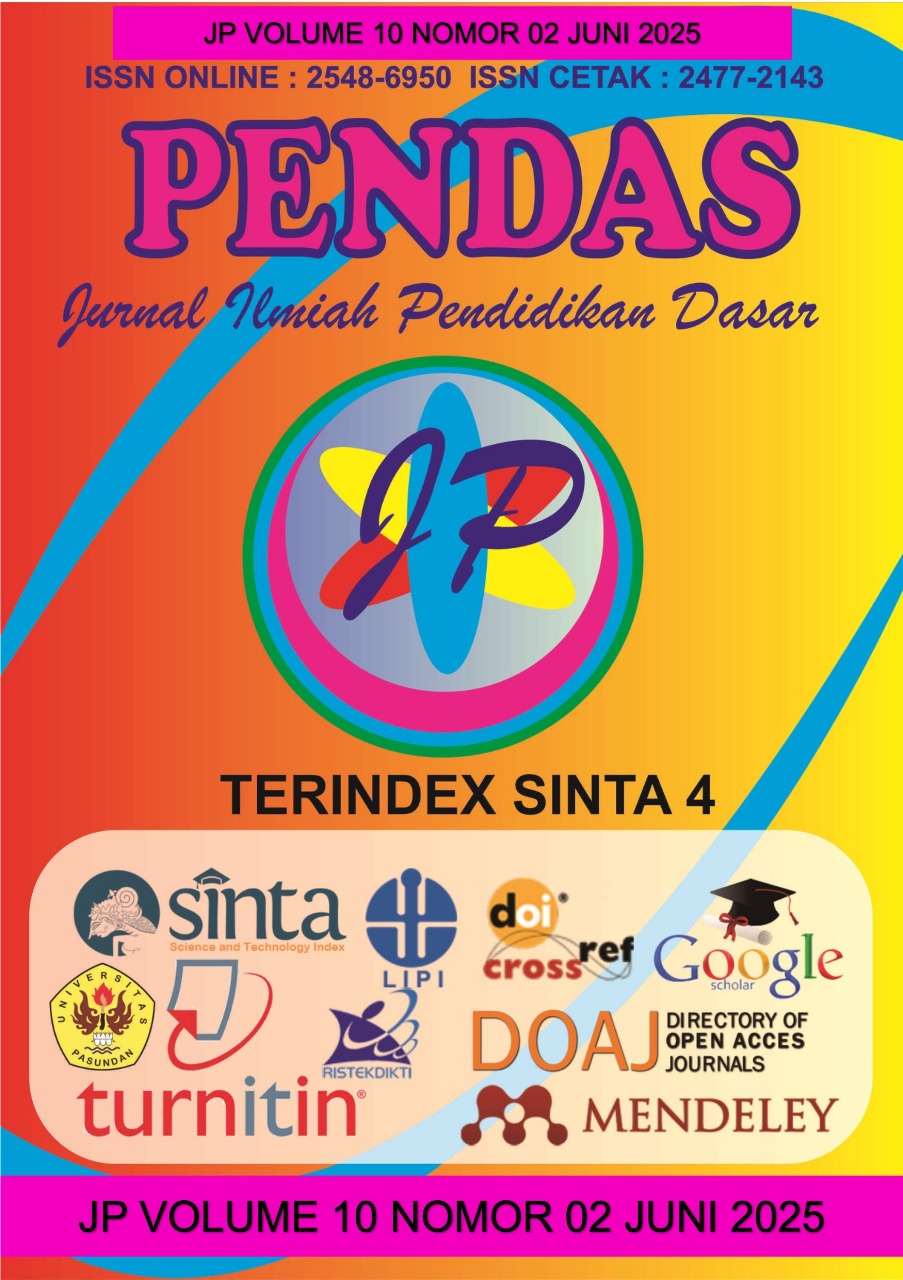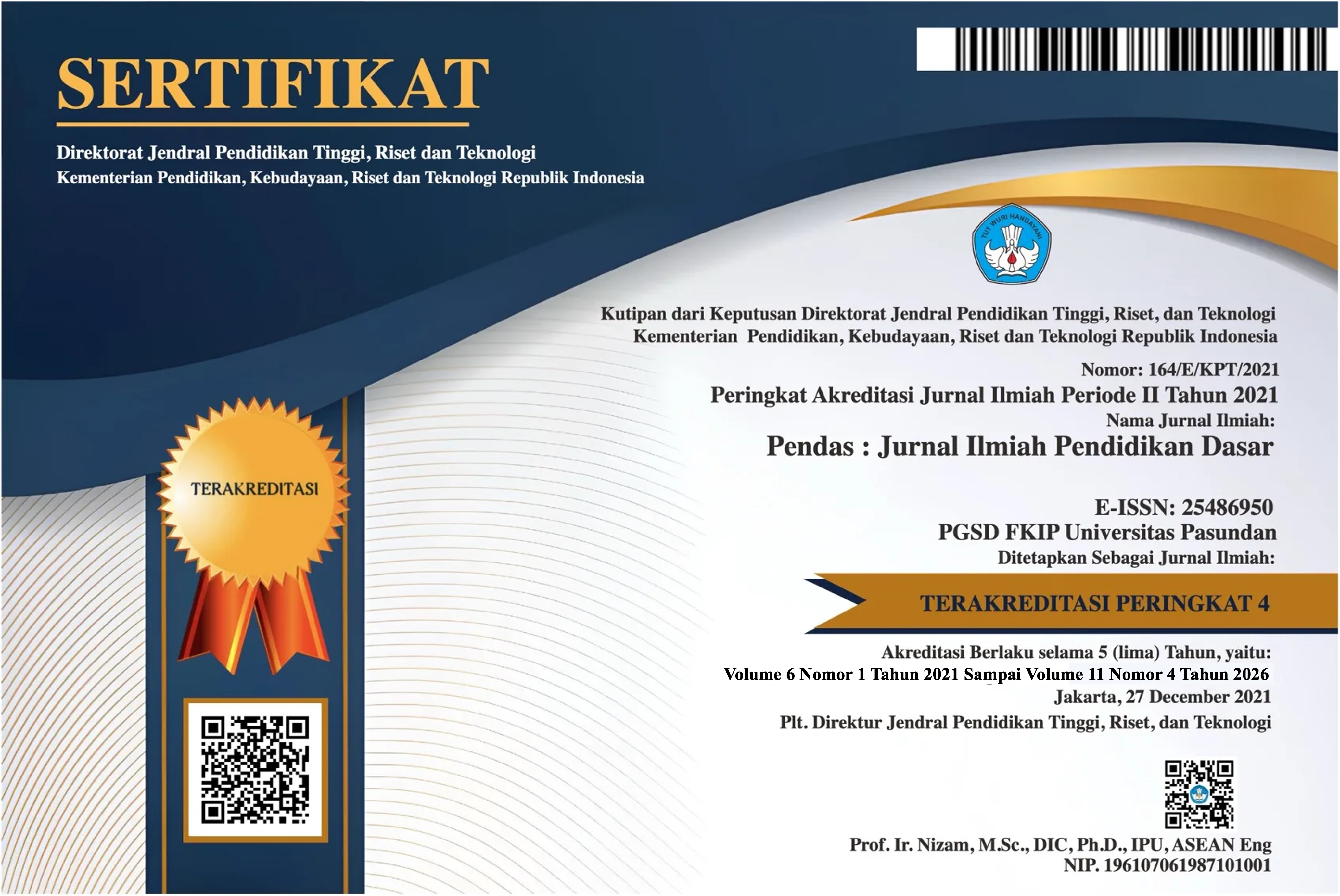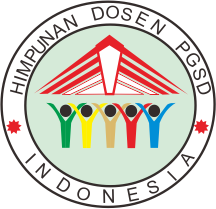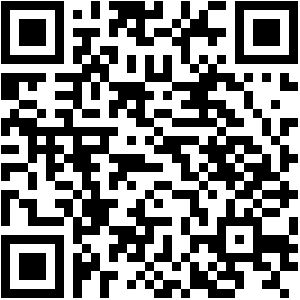PENGARUH PENGGUNAAN MEDIA AUGMENTED REALITY TERHADAP AKTIVITAS BELAJAR DAN KEMAMPUAN BERPIKIR SPASIAL SISWA MATERI KARAKTERISTIK LAPISAN-LAPISAN BUMI DI SMA N 1 TALAMAU
DOI:
https://doi.org/10.23969/jp.v10i2.30733Keywords:
Augmented Reality, Learning Activity, Spatial Thinking AbilityAbstract
The purpose of this study was to determine the effect of using Augmented Reality media on learning activities and spatial thinking skills of students by using Augmented Reality media in learning geography at SMA N 1 Talamau, West Pasaman Regency. The method in this study is a quantitative method, the research design used is a quasi experimental design with a research design of nonequivalent control group design. Data collection is done by observation, tests and documentation. Data analysis with percentages, t-test (Independent sample t-test), and N-Gain. The results showed that the percentage of learning activities in the experimental class was 83.25%, including a very effective category. While the control class of 61.73% is included in the less effective category. Then the results of data analysis of students' spatial thinking abilities in the independent sample t-test show the results of two sided p (sig2-tailed) <0.001 smaller than 0.05 indicating that there is a significant difference between the two sample groups. Strengthened by the results of the N-Gain% of students' spatial thinking ability of the experimental class of 61.2477% including the moderately effective category and N-Gain% in the control class of 23.2252% including the ineffective category.
Downloads
References
Ahyuni, A., Mudjiran, M., & Festiyed, F. (2024). Indonesian senior high school geography teacher’s understanding of written curriculum. Pegem Journal of Education and Instruction, 14(1), 93-99.
Ahyuni. (2016). Pengembangan Bahan Ajar Berpikir Spasial bagi Calon Guru Geografi. Prosiding Seminar Nasional Geografi: Kecerdasan Spasial Dalam Pembelajaran Dan Perencanaan Pembangunan, 163–175.
Arena, F., Collotta, M., Pau, G., & Termine, F. (2022). An overview of Augmented Reality. Computers, 11(2), 28.
Asmedy, A. (2021). Perbandingan Hasil Belajar Matematika Siswa yang diajar dengan Model Pembelajaran Possing Problem Berkelompok dan Metode Ceramah. Jurnal Inovasi, Evaluasi dan Pengembangan Pembelajaran, 1(2), 69-75.
Chu, G., Choi, J., Hwang, C. S., Andersen, D., & Swanson, K. (2016). Teaching Spatial Thinking with The National Atlas of Korea: A Valuable Resource for Advanced Placement Human Geography. The Geography Teacher, 13(4), 166–178.
Fatmawati, D,, Yushardi, Y,, Nurdin, E, A,, Astutik, S,, & Kurnianto, F, A, (2023), Pengaruh Model Pembelajaran Resource Based Learning (RBL) Berbasis Augmented Reality (AR) terhadap Kemampuan Berpikir Spasial Siswa SMA, Majalah Pembelajaran Geografi, 6(1), 72.
Febrianto, A. D., Purwanto, P., & Irawan, L. Y. (2021).Pengaruh penggunaan media Webgis Inarisk terhadap kemampuan berpikir spasial siswa pada materi mitigasi dan adaptasi bencana. Jurnal Pendidikan Geografi: 105 Kajian, Teori, dan Praktek dalam Bidang Pendidikan dan Ilmu Geografi, 26(2), 73-84.
Harm, K. (2021). The Characteristics and Usefulness of Geography Lessons using Google Earth Experienced by Pre-service Teachers. The Journal of The Korean Association of Geographic and Environmental Education, 29(1), 73–87.
Jo, Injeong. 2007. Aspects of Spatial Thinking in Geography Textbook Questions. Tesis. Texas: A&M University.
Kamaruddin, R., & Thahir, R. (2021). Pengaruh media pembelajaran berbasis augmented reality (AR) terhadap hasil belajar biologi siswa SMA. Jurnal Riset Dan Inovasi Pembelajaran, 1(2), 24-35.
Larasati, N. I., & Widyasari, N. (2021). Penerapan media pembelajaran berbasis augmented reality terhadap peningkatan pemahaman matematis siswa ditinjau dari gaya belajar. FIBONACCI: Jurnal Pendidikan Matematika Dan Matematika, 7(1), 45-50.
Lukman, M. I., Handoyo, B., & Utomo, D. H. (2021). Pengembangan Sumber Belajar Geografi Berbasis Spasial dengan Augmented Reality untuk Meningkatkan Kemampuan Berpikir Tingkat Tinggi (Doctoral dissertation, State University of Malang).
Majid, A. (2017). Strategi Pembelajaran. Bandung: Remaja Rosda Karya.
Metoyer, S & Bednarz, R. 2017. Spatial Thinking Assists Geographic Thinking: Evidence from a Study Exploring the Effects of Geospatial Technology.
Nurwijaya, S. (2022). Pengaruh Model Pembelajaran Problem Based Learning Berbantuan Augmented Reality Terhadap Kemampuan Spasial Siswa. EQUALS: Jurnal Ilmiah Pendidikan Matematika, 5(2), 107-116.
Oktavianto, D. A. (2017). Pengaruh project based learning dan gaya belajar terhadap kemampuan berpikir spasial siswa SMA.
Puspitaningsih, F., Wartono, W., & Handayanto, S. K. (2018). Pengaruh PBL dengan Scaffolding Prosedural terhadap Kemampuan Berpikir Tingkat Tinggi Ditinjau dari Kemampuan Tinggi dan Rendah Siswa. Jurnal Pendidikan: Teori, Penelitian, dan Pengembangan, 3(7), 898–902.
Santoso, A., Mujib, M. A., & Astutik, S. (2022). Pengaruh media pembelajaran google earth terhadap kemampuan berpikir spasial siswa sma. Geodika: Jurnal Kajian Ilmu dan Pendidikan Geografi, 6(2), 152-162.
Sardirman, (2010). Interaksi dan Motivasi Belajar Mengajar. Raja Grafindo Persada. Jakarta.
Sungkono, S., Apiati, V., & Santika, S. (2022). Media pembelajaran berbasis teknologi augmented reality. Mosharafa: Jurnal Pendidikan Matematika, 11(3), 459-470.
Downloads
Published
Issue
Section
License
Copyright (c) 2025 Pendas : Jurnal Ilmiah Pendidikan Dasar

This work is licensed under a Creative Commons Attribution 4.0 International License.



















